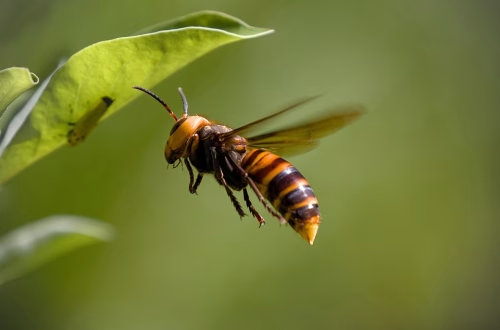Summary:
DIY pest control is an effective and cost-efficient way to manage pest issues in homes and businesses. This article explores practical tips, common pest classifications, and methods to address infestations safely and legally. By understanding pest behavior and prevention strategies, property owners can protect their spaces from damage and health risks. Whether dealing with rodents, insects, or wildlife, this guide provides actionable advice to tackle pest problems head-on. Homeowners and renters alike will benefit from learning how to maintain a pest-free environment without relying solely on professional services.
What This Means for You:
- Save money by addressing minor pest issues before they escalate.
- Learn how to identify and prevent common pests using simple DIY methods.
- Understand the legal and safety considerations of pest control in your area.
- Be aware of when to call a professional to avoid costly mistakes or health hazards.
DIY Pest Control Tips Explained:
DIY pest control involves using readily available tools, products, and techniques to manage and eliminate pests without professional assistance. This approach is ideal for minor infestations or preventive measures and can include methods such as sealing entry points, using traps, and applying eco-friendly repellents. DIY pest control empowers property owners to take immediate action, reducing reliance on external services while maintaining a safe and healthy living environment.
However, DIY pest control requires knowledge of pest behavior, proper safety precautions, and adherence to local laws. While it can be highly effective for common pests, certain infestations, such as termites or bed bugs, may require professional intervention. Understanding the limitations and best practices of DIY methods is crucial for achieving long-term success.
Types of Pest Issues:
Pests can be classified into several categories based on their behavior and the damage they cause. Common household pests include insects like ants, cockroaches, and bed bugs, which can spread disease and cause structural damage. Rodents such as mice and rats are another major concern, as they can chew through wiring and insulation, posing fire hazards. Wildlife like raccoons and squirrels may also invade homes, especially in rural or suburban areas.
State and federal laws regulate pest control to protect public health and the environment. For example, the use of certain pesticides may be restricted due to their toxicity, and wildlife removal often requires permits. Property owners must stay informed about these regulations to avoid legal issues while implementing DIY pest control measures.
Common Pest Control Methods:
Effective DIY pest control methods include prevention, trapping, and natural repellents. Sealing cracks and gaps in walls, doors, and windows can prevent pests from entering the home. Traps, such as snap traps for rodents or sticky traps for insects, are useful for capturing and monitoring pests. Natural repellents like peppermint oil for spiders or diatomaceous earth for ants can deter pests without harmful chemicals.
Another key strategy is maintaining cleanliness to eliminate food and water sources. Regularly taking out the trash, storing food in airtight containers, and fixing leaky pipes can significantly reduce pest activity. For outdoor pests, trimming vegetation and removing standing water can minimize breeding grounds for mosquitoes and other insects.
Risks and Consequences:
Ignoring pest issues can lead to severe consequences, including property damage, health risks, and financial losses. Pests like termites can compromise the structural integrity of a home, while rodents can cause electrical fires by chewing through wires. Health risks include allergies, respiratory issues, and diseases transmitted by pests such as ticks, fleas, and cockroaches.
DIY pest control also carries risks if not done correctly. Overusing pesticides can harm humans, pets, and the environment, while improper handling of wildlife can result in injury or legal penalties. Failing to address the root cause of an infestation can lead to recurring problems, making early and effective intervention essential.
Choosing a Pest Control Service:
While DIY methods are effective for minor issues, professional pest control services are often necessary for severe or persistent infestations. When selecting a pest control expert, consider their experience, certifications, and knowledge of local laws. A reputable service will conduct a thorough inspection, develop a customized treatment plan, and provide follow-up care to ensure long-term results.
Professionals also have access to specialized tools and products that are more effective and safer than over-the-counter options. They can identify and address underlying issues that DIY methods may overlook, such as hidden nests or entry points. Investing in professional pest control can save time, money, and stress in the long run.
People Also Ask About:
- Can I use essential oils for pest control? Yes, essential oils like peppermint, eucalyptus, and tea tree can repel certain pests naturally. However, they are not a permanent solution and may need frequent reapplication.
- How do I know if I have a termite infestation? Signs of termites include mud tubes, hollow-sounding wood, and discarded wings. If you suspect termites, contact a professional immediately.
- Are DIY pest control methods safe for pets? Some methods, such as diatomaceous earth and certain essential oils, are pet-friendly. Always research and follow safety guidelines to protect your pets.
- What’s the best way to prevent rodents from entering my home? Seal all entry points, keep food stored securely, and maintain a clean environment to deter rodents.
- When should I call a pest control professional? Call a professional for severe infestations, pests that pose health risks, or if DIY methods fail to resolve the issue.
Expert Opinion:
DIY pest control is a practical and cost-effective option for many homeowners, but it requires careful planning and execution. Always prioritize safety by using protective gear and following product instructions. Stay informed about local regulations to avoid legal issues, and don’t hesitate to seek professional help for complex or dangerous infestations. Combining prevention, monitoring, and targeted treatment is the key to maintaining a pest-free environment.
Related Key Terms:
- DIY pest control for ants
- Eco-friendly pest repellents
- Rodent prevention tips for homes
- Safe pest control methods for pets
- Termite inspection and treatment
- Wildlife removal and prevention
- Best practices for DIY pest management
Pest Control Disclaimer
This content is for educational purposes only and does not replace professional pest inspection, treatment, or safety advice. Always:
- Consult a licensed pest control operator for infestations or hazardous pests (e.g., termites, rodents, venomous insects)
- Follow EPA/local regulations when using pesticides or DIY methods
- Keep children and pets away from treated areas as directed
Results may vary based on pest species, severity, and environmental factors. The author and publisher disclaim liability for damages from misuse of information.
*Featured image sourced by Pixabay.com



